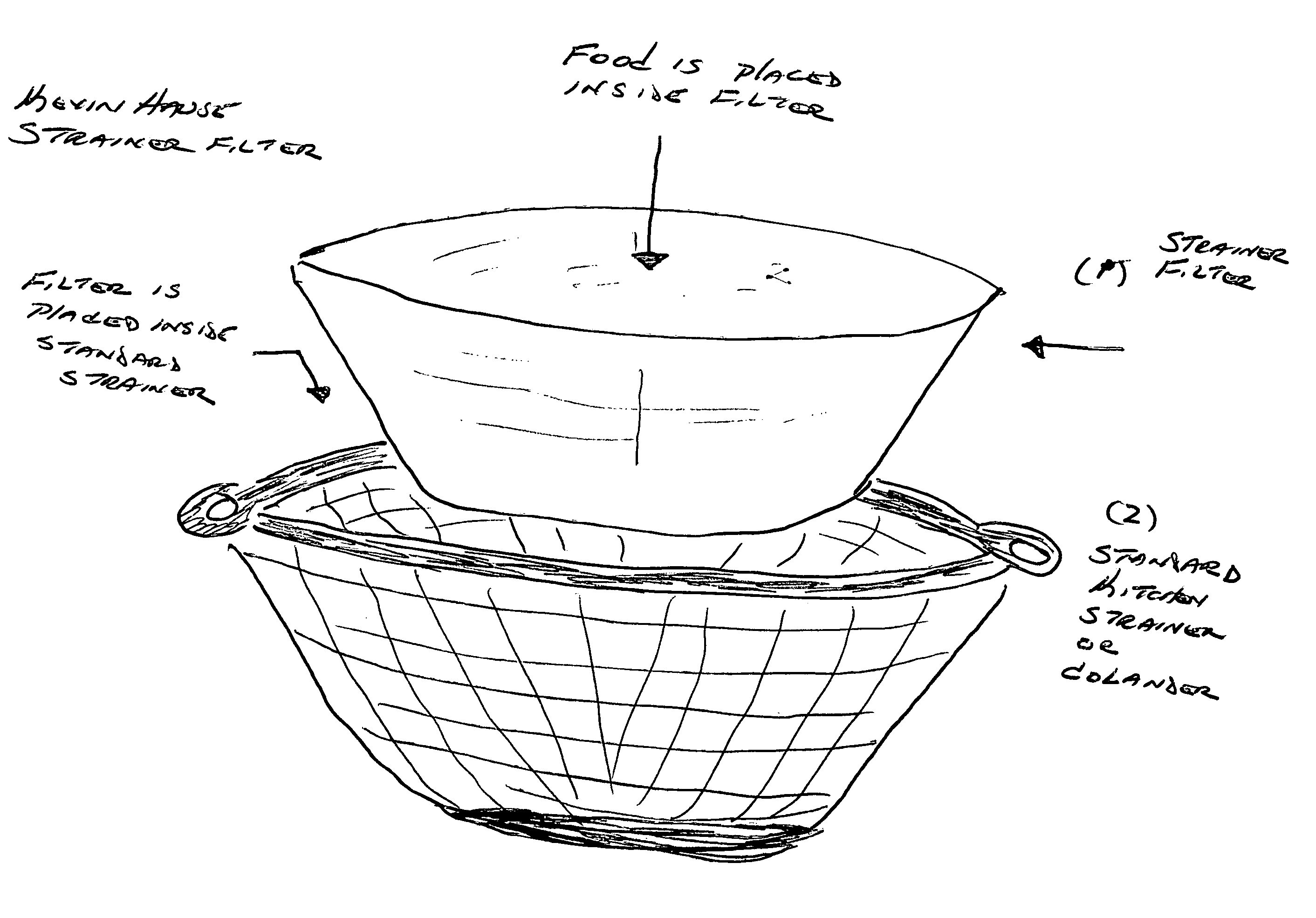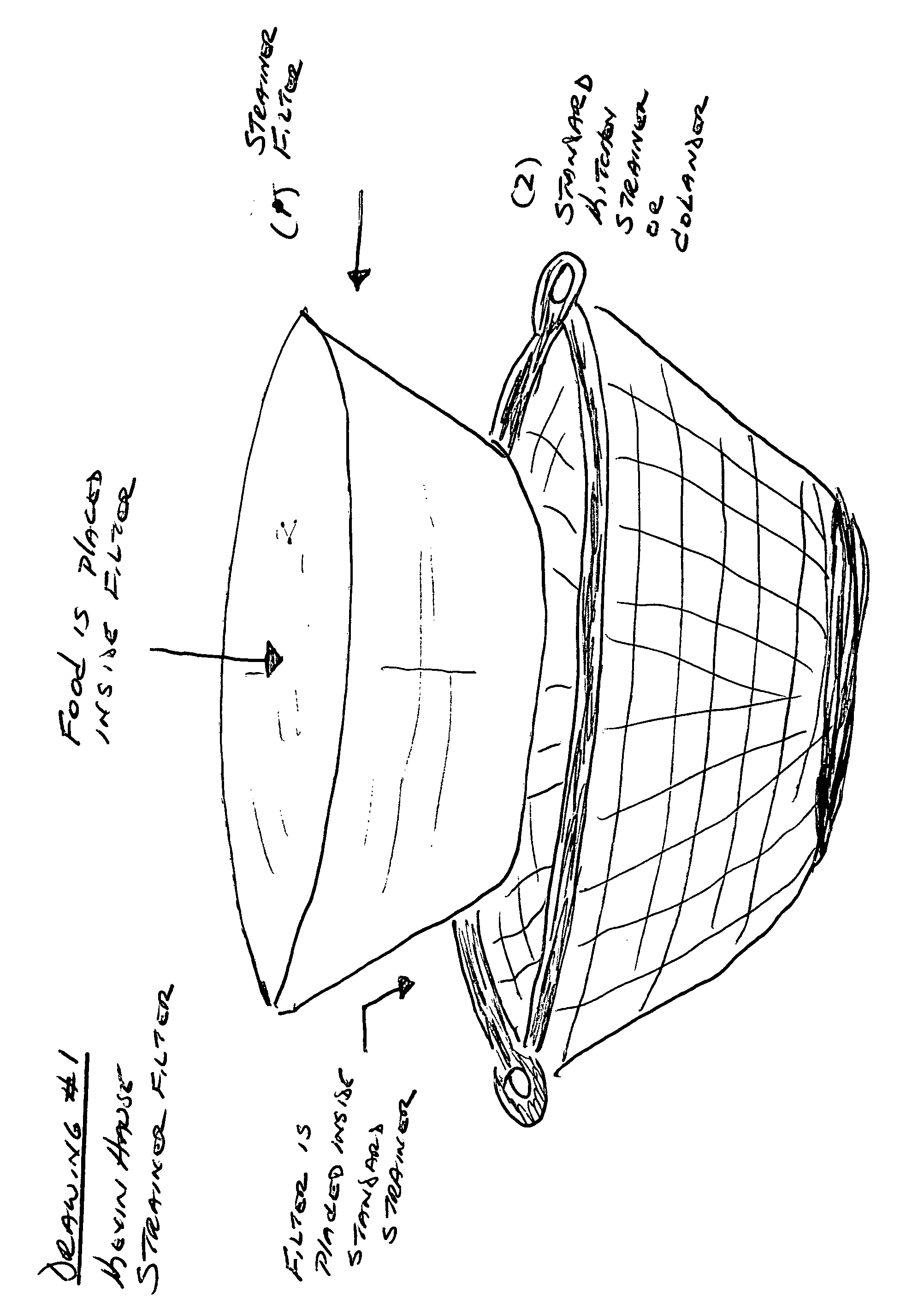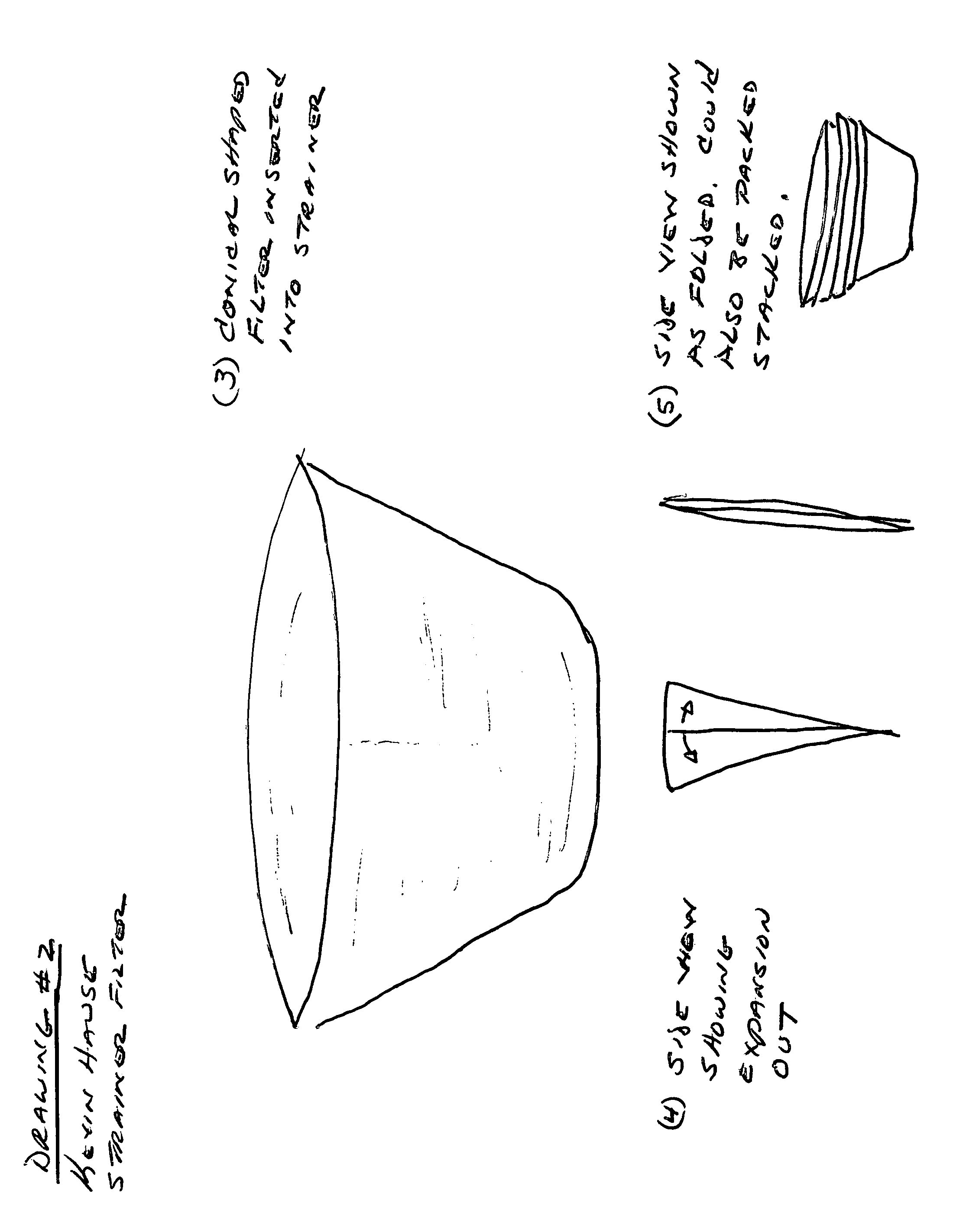Strainer filter
a filter and strainer technology, applied in the direction of filtration separation, separation process, cooking vessels, etc., can solve the problems of clogging the strainer with residue, time-consuming effort, and insufficient structural support, etc., and achieve the effect of sufficient structural suppor
- Summary
- Abstract
- Description
- Claims
- Application Information
AI Technical Summary
Benefits of technology
Problems solved by technology
Method used
Image
Examples
Embodiment Construction
[0015]The Strainer Filter can be made from a low cost material similar to a coffee filter, but not limited to that material. The Strainer Filter must be constructed for ease of packaging, which may include the ability to fold the Strainer Filter, yet be able to unfold in a manner that allows for ease of unfolding and placement into the strainer. The materials would compliment this basic operation of the Strainer Filter and could be embodied from a combination of lower cost materials (paper, as one example, but not limited to paper), or another material or combination of materials, with a reinforcing method to provide added strength due to the size of the Strainer Filter, if needed. Generally, the materials would consist of similar materials used for standard coffee filters, as this would allow production of the Strainer Filter to leverage existing manufacturing technologies, although a modification of materials may be needed depending on testing. The color can be adapted to the appr...
PUM
| Property | Measurement | Unit |
|---|---|---|
| size | aaaaa | aaaaa |
| size | aaaaa | aaaaa |
| size | aaaaa | aaaaa |
Abstract
Description
Claims
Application Information
 Login to View More
Login to View More - R&D
- Intellectual Property
- Life Sciences
- Materials
- Tech Scout
- Unparalleled Data Quality
- Higher Quality Content
- 60% Fewer Hallucinations
Browse by: Latest US Patents, China's latest patents, Technical Efficacy Thesaurus, Application Domain, Technology Topic, Popular Technical Reports.
© 2025 PatSnap. All rights reserved.Legal|Privacy policy|Modern Slavery Act Transparency Statement|Sitemap|About US| Contact US: help@patsnap.com



